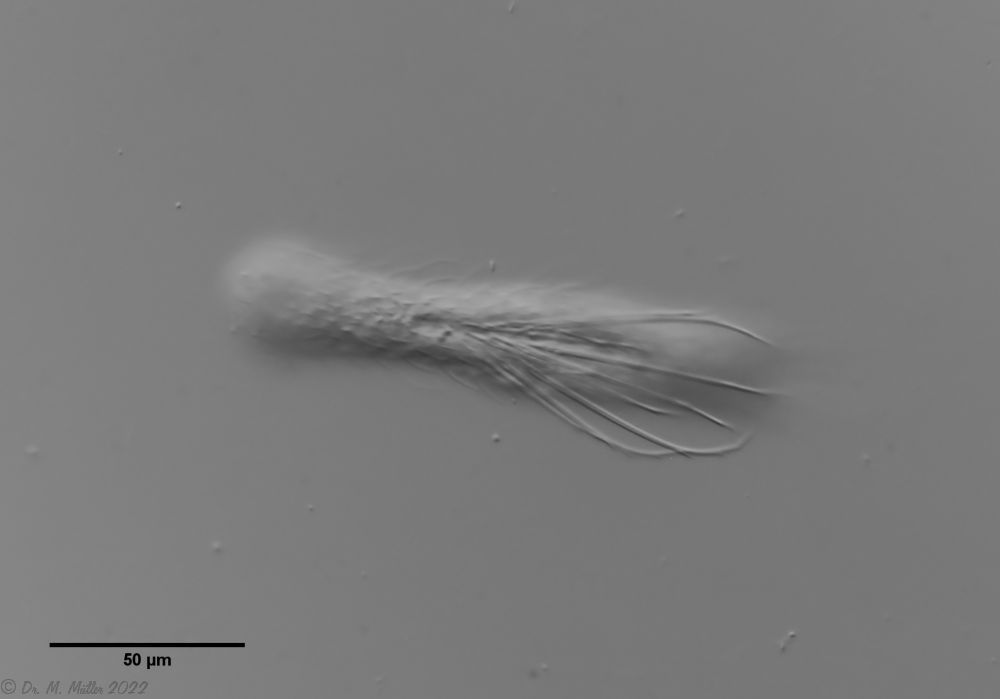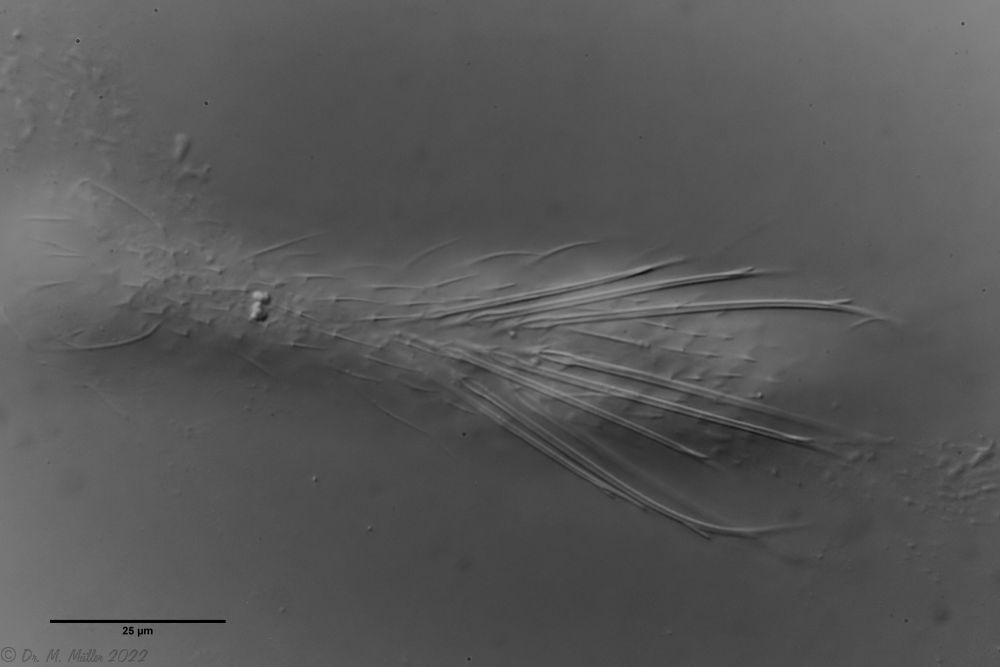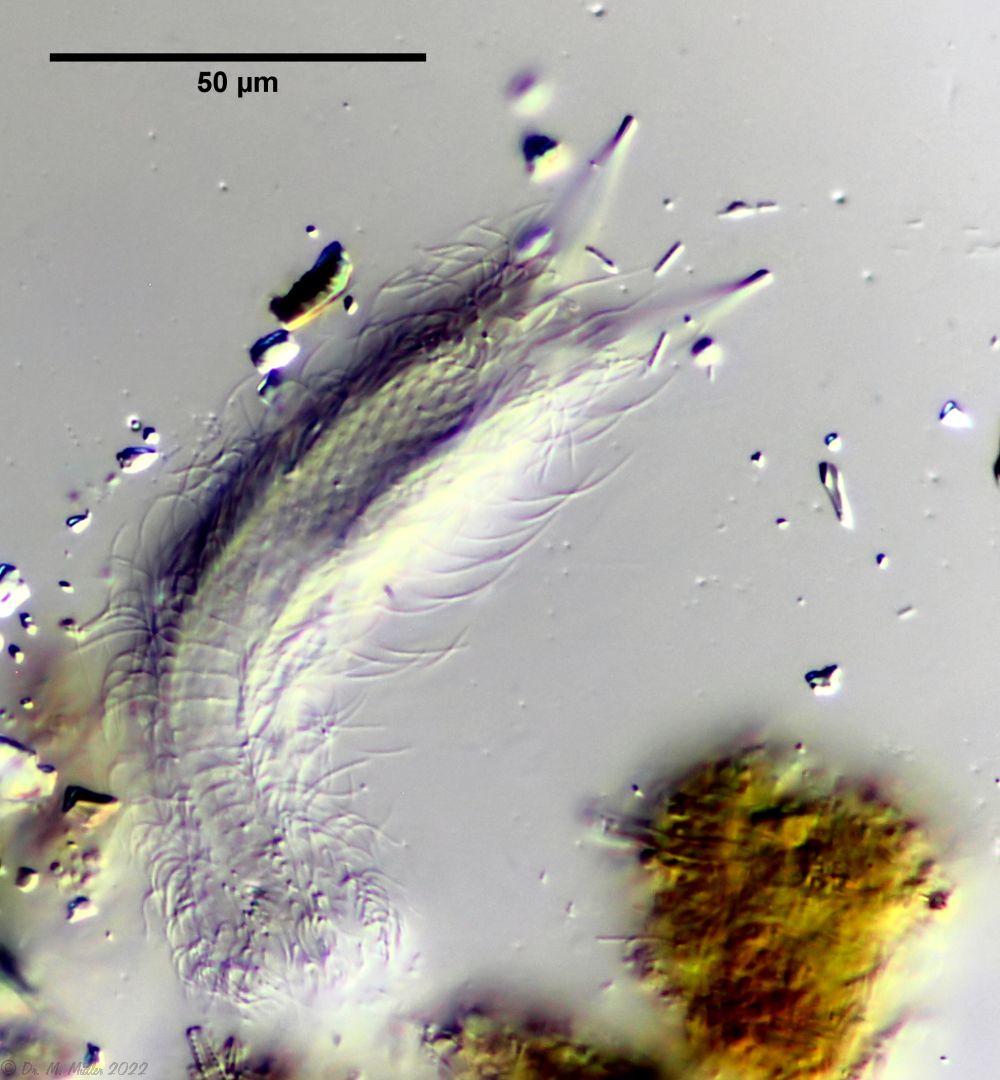Chaetonotus (H. ) novenarius

106 µm - 193 µm
Width:
21 µm - 29 µm
Width of the head ( five-lobed ):
21 µm - 27 µm
Width of the neck:
13 µm - 17 µm
Length of the furca:
17 µm - 37 µm
Adhessive tubes:
50% of furca
Pharyx ( cylindrical ):
27 µm - 51 µm
Diameter of the mouth ( round ):
unknown
Dorsal scales:
7 rows on the head, 12 on the trunk, each with 14-15 three-lobed, keeled scales (3-6 µm), which do not overlap and are short and delicately spined (10 µm); two rows of longer spines at the head end. Very long spines with two secondary tips (26-50 µm) in a relatively narrow field on the anterior trunk
Ventral scales:
2 elongate-oval, keeled terminal plates (6.6µm x 4µm) with two simple spines; 4-6 rows with 40 oval keel scales each. Own observation: in pharyngeal region rectangular transverse claspers
Oecology:
Moor, plant-rich small bodies of water
Similar species:
C. (H. ) anomalus is possibly synonymous; differs only by the absence of the two scale rows with longer spines on the head (which was present in my observations) and by scale claspers below the pharynx (which are also present in Ch. novenarius in my observations).)
Particularities:
easily delimited by the long spines that emerge from a narrow field
Chaetonotus (H.) novenarius is immediately recognizable by its nine very long large spines.
 Ch. novenarius: dorsal
Ch. novenarius: dorsal
The nine large spines each have two secondary tips and extend beyond the end of the animal’s toes. Ch. novenarius is the Chaetonotus with the longest spines relative to the body length (approx. 2/3 of the body length):
 Ch. novenarius: dorsal large spines
Ch. novenarius: dorsal large spines
Although the scales and spines clearly identify the animal as Ch. novenarius, the ventral scales of the found animal are puzzling:
 Ch. novenarius: ventral
Ch. novenarius: ventral
Striking are the rectangular scale plates in the pharynx area, which Schwank only shows for the very similar species Ch. anomalus. It is possible that this species is a synonym of Ch. novenarius, as (Schwank, 1990) does not rule out.